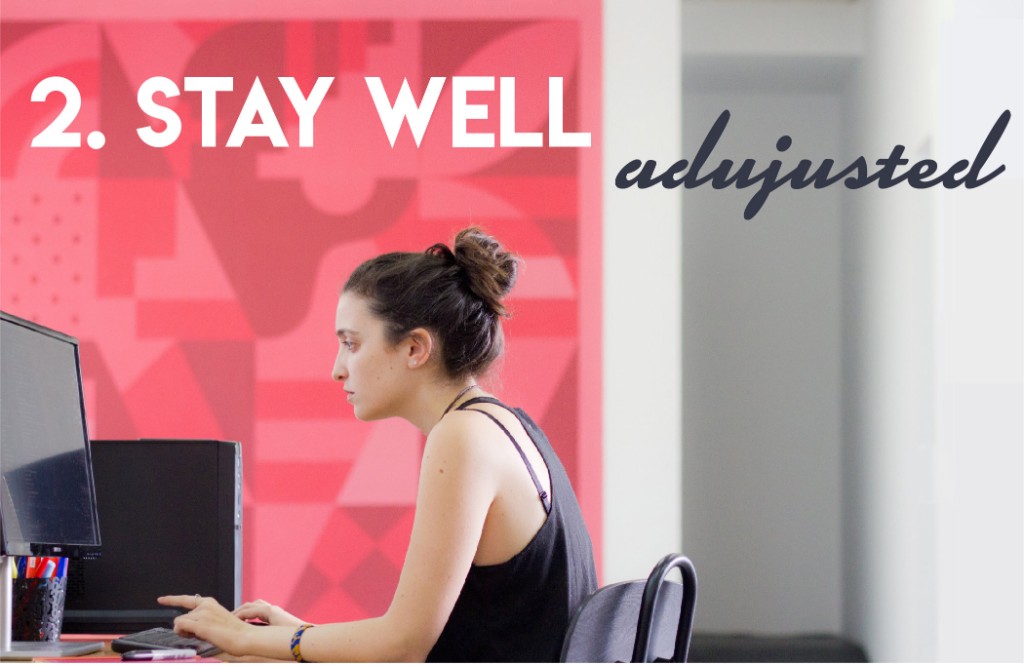It’s Back To School Time
It’s back-to-school time and that means trips to school, scraped knees, books, backpacks, and school sports. These activities can be great for you and the kids, but heavy backpacks and poor posture can have adverse effects on your kids and their health! Read on for tips on how to keep you and your entire family healthy and well adjusted.
Boost Your Immune System
 Starting the school year with a strong immune system is vital. There are several things you can do as a parent to give your child a better chance to adapt to the lifestyle stressors placed upon them. Limiting your child’s exposure to processed and sugary foods and focusing on eating more nutrient dense whole foods is a great start! In addition, help your children develop the habit of drinking water throughout the day rather than juices and soft drinks. Drinking good quality water promotes detoxification, enhances nutritional uptake and ensures optimal hydration.
Starting the school year with a strong immune system is vital. There are several things you can do as a parent to give your child a better chance to adapt to the lifestyle stressors placed upon them. Limiting your child’s exposure to processed and sugary foods and focusing on eating more nutrient dense whole foods is a great start! In addition, help your children develop the habit of drinking water throughout the day rather than juices and soft drinks. Drinking good quality water promotes detoxification, enhances nutritional uptake and ensures optimal hydration.
However, we all know how difficult that can be – so what else can you do? I recommend that children take Vitamin D3 and a high-quality probiotic daily – two very important immune system building supplements. Probiotics are the healthy bacteria that live in our intestines and help with our immune system. Vitamin D is an extremely important vitamin when it comes to immune function. In fact, a study done in 2010 showed that children taking low doses of Vitamin D3 were 42 percent less likely to come down with the flu.
Stay Well Adjusted
 Have you taken the time to look at the typical child’s posture lately? With the addition of cell phones, apps, games and streaming movies to our daily routine, our children’s posture is taking a turn for the worse. It is estimated that 32% of young children (aged two to seven) and 65% of older children (aged eight to eighteen) have a television in their bedroom and that the average child spends approximately 6.5 hours watching various media each day. Repetitive or prolonged postures while watching television, playing on the computer or cell phone can certainly impact a developing spine.
Have you taken the time to look at the typical child’s posture lately? With the addition of cell phones, apps, games and streaming movies to our daily routine, our children’s posture is taking a turn for the worse. It is estimated that 32% of young children (aged two to seven) and 65% of older children (aged eight to eighteen) have a television in their bedroom and that the average child spends approximately 6.5 hours watching various media each day. Repetitive or prolonged postures while watching television, playing on the computer or cell phone can certainly impact a developing spine.
In addition, by the age of seven, a child will have fallen around 2,500 times, and prior to turning three, they will have had three major falls out of a bed, off a changing table, or down a flight of stairs. Chiropractors can assess how your child’s spine and nervous system is adapting and with regular adjustments they can support your child’s body in growing optimally. Chiropractic adjustments remove nerve dysfunction, allowing the body the opportunity to restore balance and re-build immune strength.
Backpack Safety
 When people think “Chiropractic” and “back to school”, the first thing that usually comes up is backpacks. Here’s what you need to know; most backpack problems occur from excessive weight, inappropriate fit, and incorrect wearing of the pack. Your child should carry no more than 10-15% of their body weight in their school bags. When a heavy weight (such as a book-stuffed backpack) is incorrectly placed on the shoulders, the weight’s force can pull a child backwards. To compensate, a child may bend forward at the hips or arch the back which can cause the spine to compress unnaturally.
When people think “Chiropractic” and “back to school”, the first thing that usually comes up is backpacks. Here’s what you need to know; most backpack problems occur from excessive weight, inappropriate fit, and incorrect wearing of the pack. Your child should carry no more than 10-15% of their body weight in their school bags. When a heavy weight (such as a book-stuffed backpack) is incorrectly placed on the shoulders, the weight’s force can pull a child backwards. To compensate, a child may bend forward at the hips or arch the back which can cause the spine to compress unnaturally.
If your child uses the traditional backpack, urge them to wear both straps. Here’s what to look for when picking a backpack: two wide, padded shoulder straps / padded back / waist belt / multiple compartments. Although it’s worth noting that messenger bags or purses, despite potential problems, are usually the better choice for children. When used correctly, the strongest muscles in the body, the back, and abdominal muscles support the weight of the packs. If the packs aren’t too heavy and used correctly, the weight is evenly distributed across the body.
Hit the Books, But Save Your Back
 When you are studying or reading, be sure to use a book stand so that your book is at eye level. This will reduce the amount of strain on your neck and shoulders from having your book lay flat. It also has the added bonus of giving you extra desk space! If your material is on a laptop or desktop computer, be sure that you are positioned properly and not looking down or slumped over a keyboard. This can create a lot of strain on the spine!
When you are studying or reading, be sure to use a book stand so that your book is at eye level. This will reduce the amount of strain on your neck and shoulders from having your book lay flat. It also has the added bonus of giving you extra desk space! If your material is on a laptop or desktop computer, be sure that you are positioned properly and not looking down or slumped over a keyboard. This can create a lot of strain on the spine!
Warm Up and Stretch Out
 Remember, your body may not have performed in an athletic way after a few months of rest over summer break and will need extra time to warm up!
Remember, your body may not have performed in an athletic way after a few months of rest over summer break and will need extra time to warm up!
Be sure to warm up for a minimum of 10-15 minutes before playing. The warm up should involve simple movements that “simulate” your sport and get the heart rate up. Always stretch after your sport!
